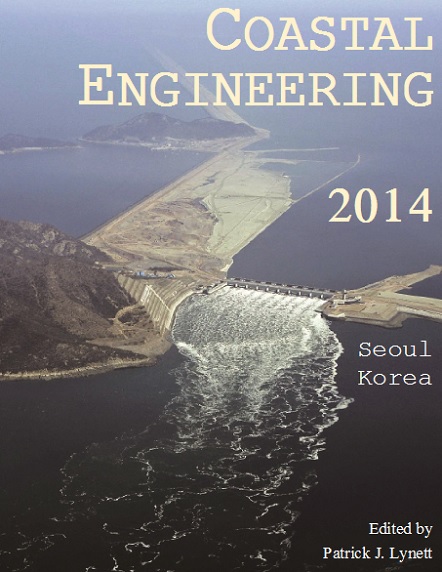Abstract
During 2012 and 2013, the State of Florida was impacted by three tropical weather systems (Debby, Isaac, and Sandy) that caused significantly more beach erosion than similar, traditionally classified storms. Here, the storms are reclassified using the more recently developed Storm Erosion Index (SEI) which takes into consideration both the storm tide and storm waves, as well as the storm duration. The SEI has been shown previously to accurately represent the impact of coastal storms at a number of other sites (Miller and Livermont, 2008). When reanalyzed with the SEI, Tropical Storm Debby was found to be more significant in terms of beach erosion potential than any other storm in the record (since 1996), ranking as a "Category 5† storm with a return period of 23.4 years. Hurricane Isaac, which followed closely on the heels of Debby, ranked as a "Category 2† storm with an associated return period of 3 years. A sensitivity analysis performed on the results indicated that the wave steepness threshold used to separate erosion and accretion was particularly important during Isaac, as the conditions throughout the storm remained close to the threshold. While Hurricane Sandy is more known for the devastation it caused in the northeast, it also caused significant beach erosion in the State of Florida. The SEI more accurately reflects the significance of the beach erosion experienced during Sandy, and ranks the storm ahead of all of the other storms in the record (since 1994), including Hurricanes Frances, Gordon, and Jeanne which all made landfall near the area considered. Overall, Sandy registered as a "Category 5† storm in terms of beach erosion potential, with a return period of 40.5 years.References
Broward County, Florida. 2013. Project Information Report: Rehabilitation effort for the Broward County Shore Protection Project, Segment II.
Bruun, P. 1962. Sea Level Rise as a Cause of Shore Erosion. Journal of Waterway, Port, Coastal and Ocean Engineering, ASCE, 88, 117.
Dean, R.G. 1977. Equilibrium Beach Profiles: US Atlantic and Gulf Coasts. Department of Civil Engineering, Ocean Engineering Report No. 12, University of Delaware.
Dean, R.G. and R.A. Dalrymple. 2002. Coastal Processes with Engineering Applications. Cambridge University Press.
Dolan, R., and R.E. Davis. 1992. An Intensity Scale for Atlantic Coast Northeast Storms. Journal of Coastal Research, 8, 352-364.
Herrington, T.O., and J.K. Miller. 2010. A comparison of methods used to calculate northeaster damage potential, Shore and Beach, 78.2. 20-25.
Holmes, J.D., and W.W. Moriarty. 1999. Application of the Generalized Pareto Distribution to Extreme Value Analysis in Wind Engineering. Journal of Wind Engineering and Industrial Aerodynamics, 1-10.
Johnson, J.W. 1949. Scale Effects in Hydraulic Models Involving Wave Motions. Transactions of the American Geophysical Union, Vol. 30(4), 517-525.
Kriebel, D.L., R. Dalrymple, A. Pratt, and V. Sakovich. 1996. Shoreline Risk Index for Northeasters. Proceedings of the International Conference and Exposition on Natural Disaster Reduction, ASCE. 251-252.
Miller, J.K. 2001. Development of Erosional Indices and a Shoreline Change Rate Equation for Application to Extreme Event Impacts. Masters Thesis submitted to University of Florida Department of Coastal Engineering, 99pp.
Miller, J.K. and E. Livermont. 2008. A Predictive Index for Wave and Storm Surge Induced Erosion, Proceedings of the 31st International Conference on Coastal Engineering, Hamburg, Germany.
Miller, J.K., and J. Wehof. 2012. Evaluation of Storm Severity along the Florida Gulf Coast in the Wake of Tropical Storm Debby and Hurricane Isaac. Technical Report Prepared for the Jacksonville District of the USACE.
Miller, J.K., and J. Wehof. 2013. Evaluation of Storm Severity Based on the Storm Erosion Index along the Southeast Atlantic Coast of Florida in the Wake of Hurricane Sandy. Technical Report Prepared for the Jacksonville District of the USACE.
Moore, B.D. 1982. Beach Profile Evolution in Response to Change in Water Level and Wave Height. MCE Thesis, Department of Civil Engineering, University of Delaware, 164 pp.
Phillips, A. 2012. Tropical Storm Debby delivered massive losses to Pinellas beaches, USF study says. Tampa Bay Times.
Wang, P. and T. M. Roberts. 2012. Volume and Shoreline Changes along Pinellas County Beaches during Tropical Storm Debby. Coastal Research Laboratory Report, University of South Florida.

